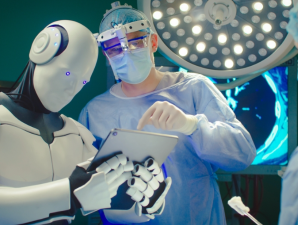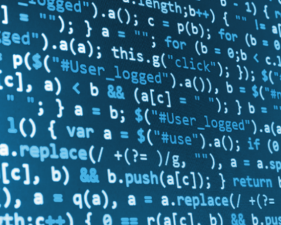With the rapid development of artificial intelligence, the medical field is ushering in an unprecedented change. Smart medicine, as the application of artificial intelligence in medicine, not only improves medical efficiency, but also brings more personalized and accurate medical services to patients.
With the rapid development of artificial intelligence, the medical field is ushering in an unprecedented change. Smart medicine, as the application of artificial intelligence in medicine, not only improves medical efficiency, but also brings more personalized and accurate medical services to patients.
-Basic concepts of artificial intelligence medicine
The connotation and extension of artificial intelligence medicine
Artificial intelligence medicine refers to the use of a series of algorithms and software in the field of complex medical data analysis based on the Internet, combined with artificial intelligence technology and medical big data services, to imitate the thinking process of medical experts in diagnosing diseases, thereby improving the diagnostic quality and efficiency of medical staff. More specifically, artificial intelligence medicine enables computers to autonomously analyze the relationship between patients' symptoms and prevention or treatment methods without receiving direct instructions from medical staff.

Artificial intelligence medicine can also be interpreted as the application of artificial intelligence technology in medical scenarios. Combined with the various applications of artificial intelligence in the medical field at home and abroad, its application scenarios are now summarized into six categories: medical imaging, drug development, medical assistants, biotechnology, disease risk prediction, and hospital management. The main artificial intelligence technologies involved include machine learning, computer vision, natural language processing, etc. Machine learning usually uses statistical methods to enable computers to have "learning" skills. Computer vision refers to the use of computers to simulate the human visual system, thereby achieving functions such as object recognition, shape and orientation confirmation, and motion judgment. Natural language processing mainly studies the use of computers to process large amounts of natural language data, thereby achieving speech recognition, semantic recognition, and natural language generation.
The integration of AI in the medical field heralds the improvement of patient prognosis, the improvement of diagnostic accuracy, the realization of personalized treatment, the acceleration of medical research and drug discovery, the improvement of medical efficiency, the reduction of costs, and the great potential to alleviate the occupational burnout of medical personnel.
The increasing availability of multimodal data (including genomics, clinical data, imaging, wearable device data, etc.), coupled with technological innovations in mobile technology, the Internet of Things, computing power, and data security, have jointly promoted the integration of medicine and technology, laying the foundation for a fundamental transformation of the medical model.

At present, technological innovation in the field of artificial intelligence is very active, which has brought great impetus to the development of "artificial intelligence + medical" technology products.
First, the underlying technical elements are becoming increasingly complete. In terms of data, as the digitalization level of the medical industry continues to improve, the amount of data in the medical industry has shown exponential growth, and relevant data resources such as the electronic medical record database of domestic tertiary hospitals and the health record database of grassroots hospitals and physical examination institutions have continued to accumulate. In terms of computing power, AI-specific chips based on technical routes such as GPU and FPGA have developed rapidly, and the parallel computing capabilities of massive data have continued to improve, which can basically meet the computing power requirements of AI-enabled medical care. In terms of algorithms, the rapid iteration of deep learning algorithm models has continuously improved the intelligence level of AI and expanded the penetration area in the medical industry.
Secondly, AI application technology has developed rapidly. The rapid development and popularization of AI algorithm models have promoted the rapid progress of application technologies such as computer vision, speech recognition, and natural language processing. For example, in the field of computer vision, AI technology has made the image recognition error rate of machines lower than that of the human eye. In the 2017 ImageNet Challenge, the startup Momenta has reduced the error rate to 2.251%, which is nearly 25% higher than the first place result of 2.991% in the previous year, and is far lower than the 5.1% error rate of the human eye.
